7 Best National Parks to See Moose
The largest member of the deer family, the massive moose is one of the most iconic animals in the colder regions of the Northern Hemisphere.
In the United States, they live in most of the northern states, from New England and New York to Michigan and Minnesota to Wyoming, Montana, Idaho and Alaska. Many of those states happen to have one or more national parks, too, which offer great opportunities to see moose in the wild.
Thanks to their sheer size, long face, clumsy appearance and the males’ giant antlers, moose are one of the most easily recognizable mammals of the national parks.
Bull moose can weigh up to 1,500 pounds (700 kg), while cows max out at about 1,000 pounds (450 kg). They’re an imposing sight, indeed, a full foot taller than the nearest large deer species, which is the elk or wapiti.
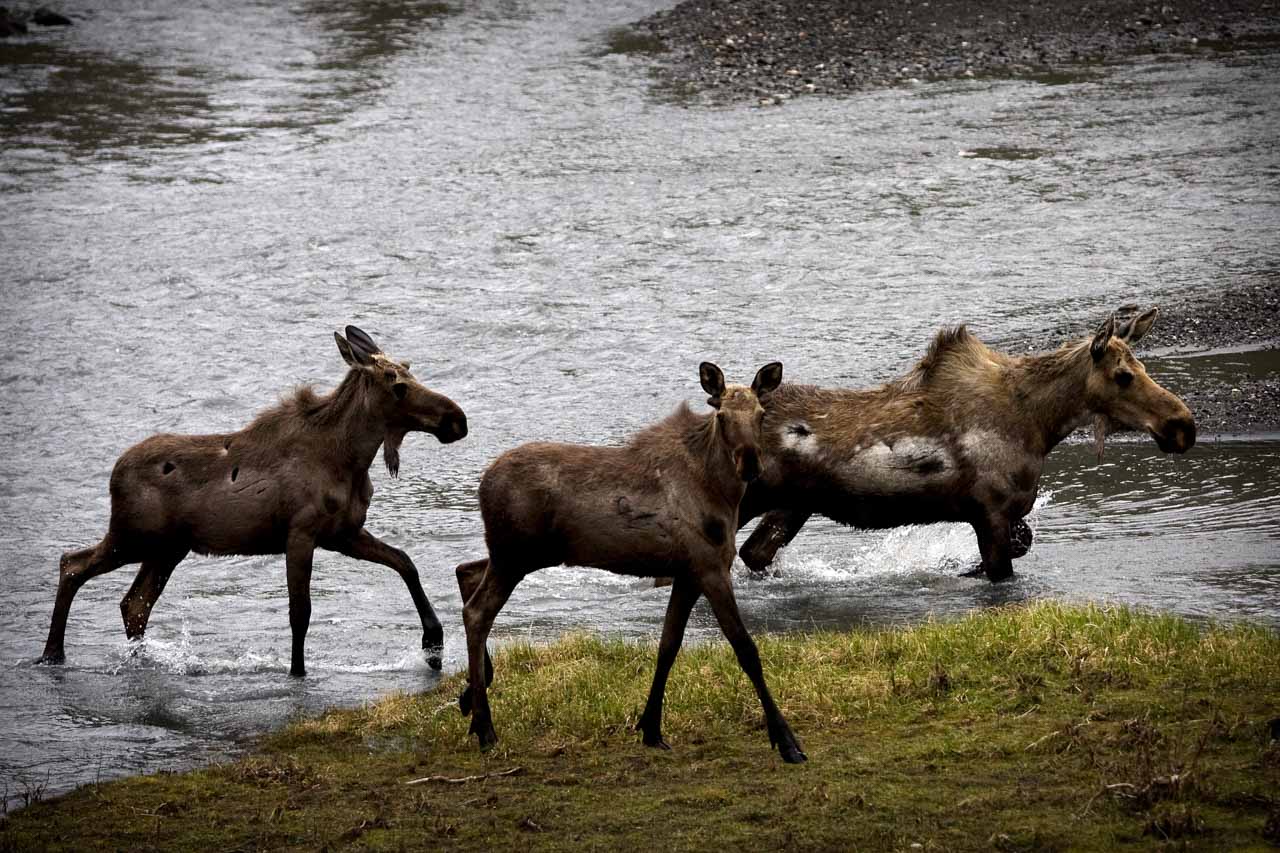
Best National Parks to See Moose
Seeing a moose in the wild is a memorable experience. In some national parks that have moose, these animals are even among their top attractions.
Parks like Grand Teton, Rocky Mountain and Denali are famous for their large moose populations, which are often (easily) seen by the average visitor, while Isle Royale’s wolf-moose study program is unique in the world.
If you’d like to see moose in the wild in America, the following national parks are arguably the best places to do that.
Isle Royale National Park, Michigan
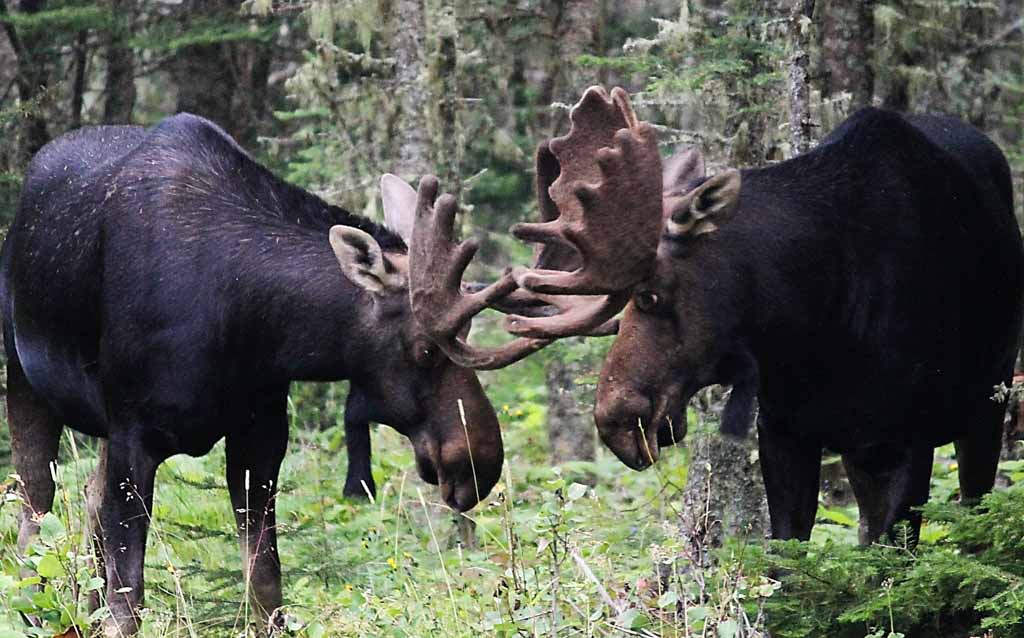
Only accessible by ferry, private boat or seaplane, Isle Royale is an island is a safe island haven for moose. Located in Michigan’s Lake Superior, close to the Canadian border, Isle Royale National Park encompasses this large island as well as dozens of smaller islets.
Moose are by far the largest animal on this wilderness island and their population is quite large. Since 1980, the Isle Royale moose population has fluctuated between 500 and 2,400 animals.
This fluctuation is linked to available vegetation and predators that are present on the island. And by predators, we mean gray wolves, which are the only animal moose have to fear in Isle Royale National Park.
In fact, Isle Royale’s renowned predator-prey study, the longest research of its kind in the world, focuses on the relationship between wolves, moose and beavers.
In addition to offering amazing moose viewing, Isle Royale National Park is also one of the best parks to see wild wolves.
Moose range the entire island and you can encounter them on all trails and in each campground.
The best locations for moose watching on Isle Royale, however, are at inland lakes and beaver ponds. Like so many other wild animals, they’re most active at dawn and dusk.
Best Places to See Moose in Isle Royale National Park
- Feldtmann Lake
- Ojibway Lake
- Hidden Lake in Tobin Harbor
- Washington Creek in Windigo
More About Isle Royale National Park
Yellowstone National Park, Wyoming, Montana and Idaho
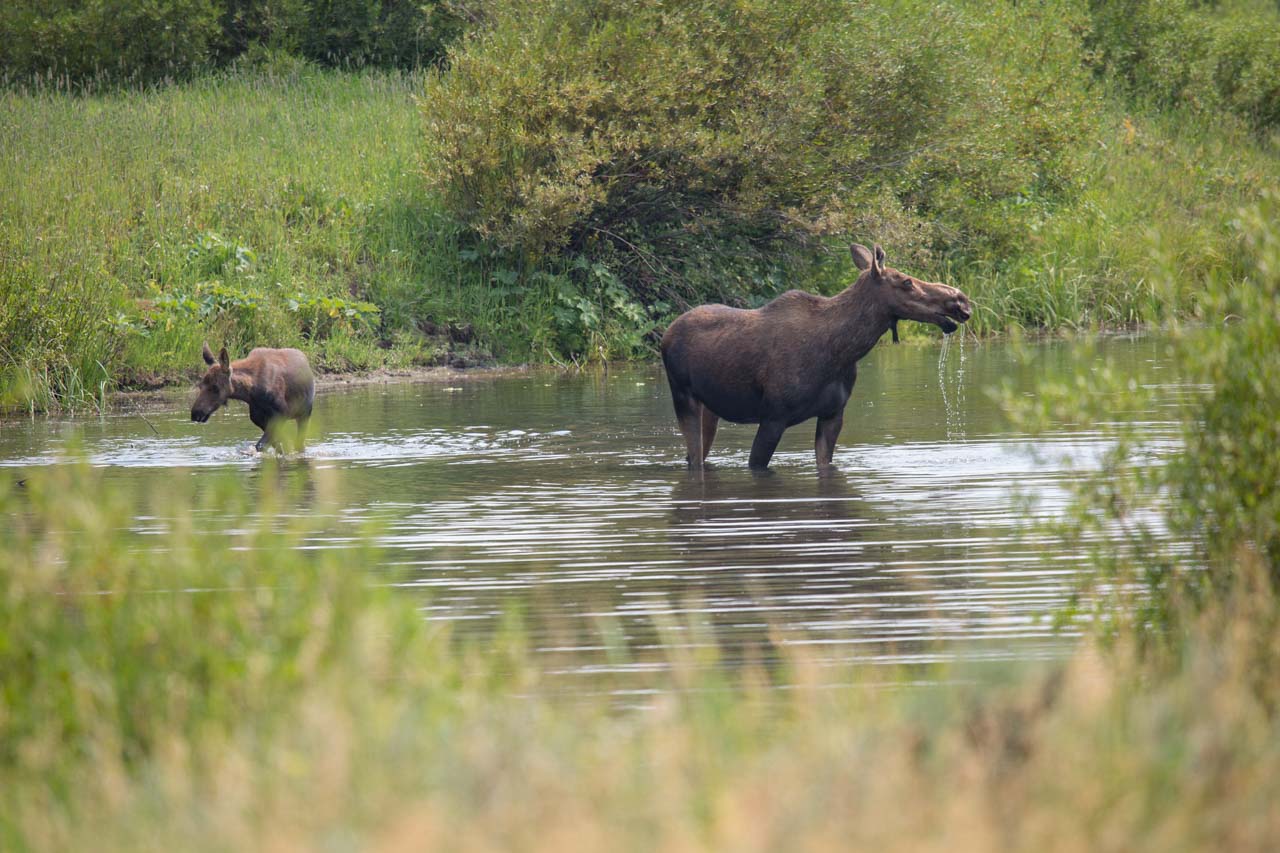
One of the best national parks for wildlife viewing, Yellowstone National Park is world-famous for its abundant megafauna. From gray wolves, grizzly and black bears to American bison, elk, pronghorn and moose, it’s a wildlife lover’s paradise.
While most visitors come to the park for its geysers, grizzlies and bison, the chance to see moose in the wild is another major feature that makes Yellowstone so special.
Relative to the other large mammals, however, the moose population is smaller in Yellowstone National Park than in many other parks in this list.
This is probably due to the large numbers of other ungulates, such as elk and bison, which also browse on willows and may reduce the food available to moose. Predation by wolves and bears also keep the moose population in Yellowstone relatively low.
That’s not to say you can’t see moose in Yellowstone, though. Rather the opposite, in fact. Although there are currently fewer than 200 moose in Yellowstone National Park, the animals do tend to congregate in the same areas.
Knowing where to find them greatly increases the likelihood you’ll actually see one. Look for them on riverbanks, along lake shores and in boggy meadows.
Your chances of seeing or encountering moose are highest in places like Hayden Valley, Fishing Bridge and Willow Park. These are all places in Yellowstone with an abundance of water and willows.
Best Places to See Moose in Yellowstone National Park
- Hayden Valley
- Fishing Bridge
- Yellowstone Lake
- West Thumb
- Willow Park (halfway between Mammoth and Norris)
More About Yellowstone National Park
- Park Website
- Travel Guide
- Topographic Map
- Top Things To Do in Yellowstone National Park
- Best Spring Hikes in Yellowstone National Park
- Popular Activities At Mammoth Hot Springs (Yellowstone)
- Accommodation
Grand Teton National Park, Wyoming
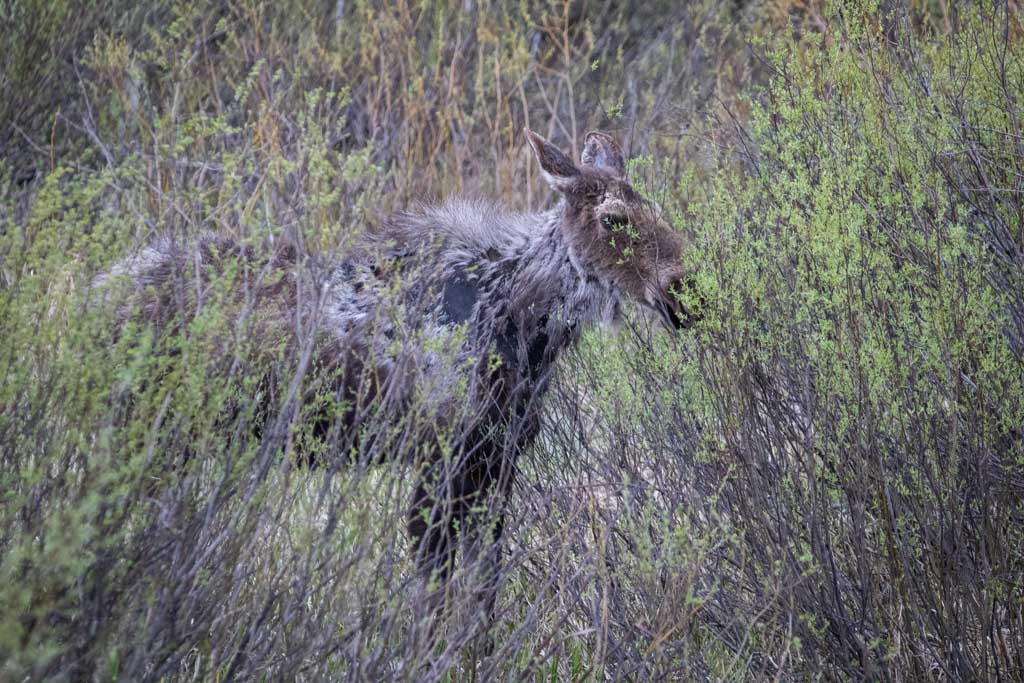
Yellowstone’s neighbor to the south may be the smallest of the two Wyoming national parks, but it does have more moose. The Grand Teton moose population consists of hundreds of animals.
In the wildlife-rich Greater Yellowstone Ecosystem, moose are concentrated heavily in Grand Teton National Park. In fact, the park has one of the densest concentrations of moose in the national parks.
And they are extremely easy to spot, too. The park website says that “no matter where you go in Grand Teton National Park, a mammal will not be far away.”
This definitely includes moose, which are common sights along the Teton Park Road and Highway 191, which form a loop through the heart of the park.
To illustrate how common moose are in Grand Teton National Park, there’s even a place called “Moose” in the park’s southern part.
While the park is best known for its spectacular mountain peaks, the Teton Range, it’s also home to countless lakes, beaver ponds, creeks and rivers. All of those are prime moose habitat.
In the morning and evening, you can almost always find moose at iconic viewpoints like Oxbow Bend and Willow Flats, which are on the Teton Park Scenic Loop Drive.
They’re also regularly seen anywhere along the Snake River and small ponds like Blacktail Ponds and Christian Pond.
Best Places to See Moose in Grand Teton National Park
- Oxbow Bend
- Willow Flats
- Snake River between Moran and Moose
- West shore of Jenny Lake near Cascade Canyon
- Christian Pond
- Blacktail Ponds
More About Grand Teton National Park
- Park Website
- Travel Guide
- Topographic Map
- Best Grand Teton Hikes
- Top Things To Do in Grand Teton National Park
- Best Places to See Bears in Grand Teton National Park
- Accommodation
Glacier National Park, Montana
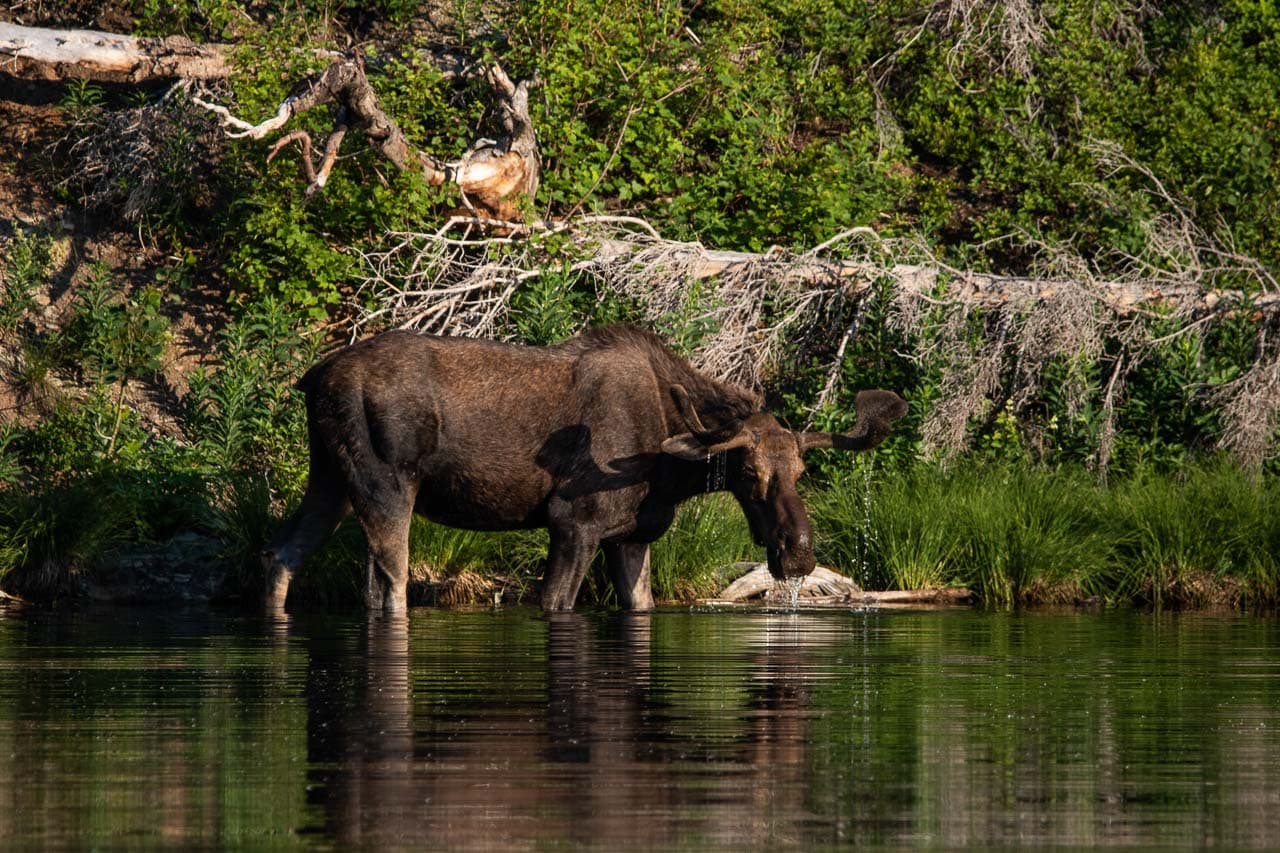
Wildlife viewing is one of the most popular activities in Glacier National Park. Along with bears, bighorn sheep and mountain goats, moose are one of the stars of the show in this spectacular mountain park.
Yet, Glacier National Park and its stunning lakes, rivers and forests provide an ideal place for moose to not only live, but thrive.
If you’re lucky, you may be able to see moose in or near the park’s marshy areas, slow-flowing streams and shallow lakes.
Moose are present on both sides of the Continental Divide in Glacier National Park, but the east side tends to be better for moose viewing.
It’s hard to find any moose along the extremely busy Going-to-the-Sun Road, so you’ll have to explore some other parts of the park to see them. The St. Mary Lake area, however, does offer some occasional moose viewing opportunities.
Both Many Glacier and Two Medicine are excellent. These areas have numerous smaller lakes and myriad Glacier National Park hiking trails, while it’s also a bit easier to get away from the crowds there.
Best Places to See Moose in Glacier National Park
- Fishercap Lake
- Red Rock and Bullhead Lakes
- Two Medicine Lake
- St. Mary River
- Lake McDonald creeks
More About Glacier National Park
- Park Website
- Travel Guide
- Topographic Map
- Best Glacier Hikes
- Top Attractions on Going-to-the-Sun Road
- Accommodation
Rocky Mountain National Park, Colorado
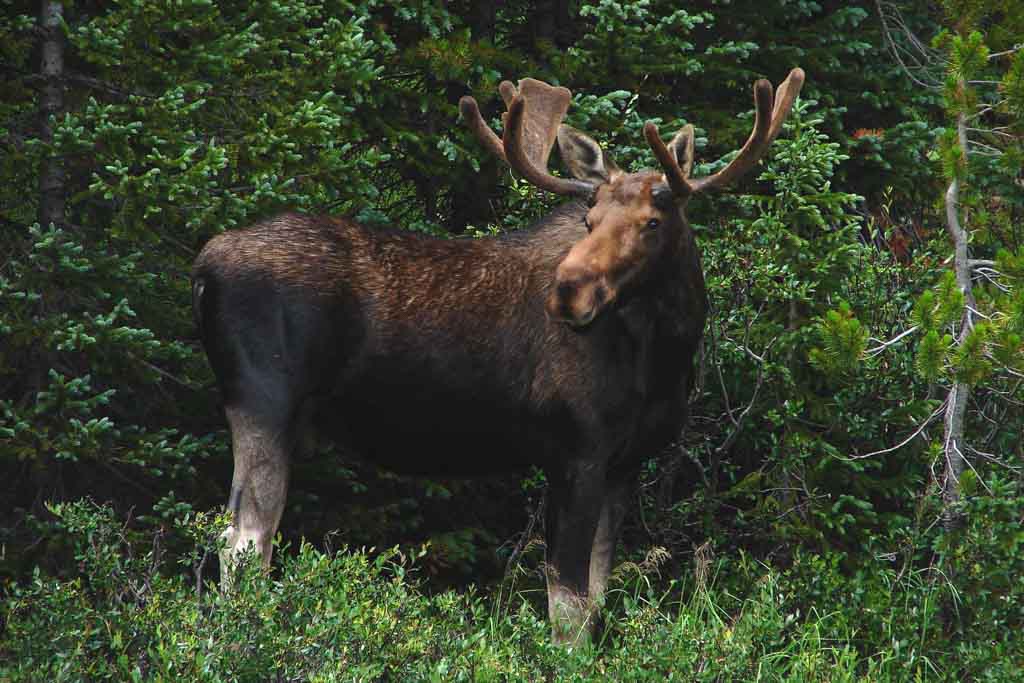
Spectacular Rocky Mountain National Park is not just a great place for hiking and scenic driving, it’s also offers some of the best moose watching in America. They are a pretty common sight in the park, to the delight of many visitors.
Moose populations in Colorado are doing great and there are about 2,500 animals in the state. In Rocky Mountain National Park, your chances of seeing them are best on the west side, which is the wettest part of the park.
Look for them in the Kawuneeche Valley along Highway 34. On the east side, they are becoming more frequent as well, where they enjoy lakes and riparian areas.
According to the National Park Service, you can see moose in Rocky Mountain National Park “at almost any time of the day.”
Every individual moose establishes its own range and can hang out in the same area for many days—even weeks.
They have their favorite feeding locations and return there year after year. This makes it fairly easy to predict where moose might be at any given time of the year at Rocky Mountain.
Best Places to See Moose in Rocky Mountain National Park
- Kawuneeche Valley
- Timber Creek Campground
- Sprague Lake
- Cub Lake
More About Rocky Mountain National Park
Denali National Park, Alaska

Along with grizzly bears, wolves, Dall sheep and caribou, moose are one of the “Big Five” mammals in Denali National Park. The opportunity to spot these formidable animals is something many visitors look forward to.
Although Denali National Park is easily accessible from towns like Anchorage and Fairbanks, you can only reach its wild interior on so-called narrated trips (tour buses) or non-narrated trips (transit buses).
These buses travel up and down the Denali Park Road, most offering excellent opportunities to see wildlife along the park’s only road.
For the most amount of freedom and flexibility during your visit to Denali, we recommend using the transit bus service, which is free. This option allows you to hop on and off the bus at various locations, do some day hiking, and immerse yourself in the Denali National Park wilderness.
The first 15 miles of the Park Road, however, are open to private vehicles from late-May to early-September. You can drive as far as Savage River, where you can take a bus deeper into the park if you’d like.
Conveniently and luckily, those 15 miles are prime moose habitat.
Moose in Denali National Park tend to be found in the wooded areas, which are usually near marshes, lakes or ponds—their preferred habitat is willow marshes.
In summer, they may also graze on grasses and bushes along the Park Road.
Best Places to See Moose in Denali National Park
- Riley Creek Campground (cows with calves in spring)
- Between the Entrance and Savage River, mile 1 to 15 of Denali Park Road (in summer)
- Open area between mile 9 and 13 of Denali Park Road (bull moose in fall)
- Infrequently along the rest of the Park Road
More About Denali National Park
Voyageurs National Park, Minnesota
A vast region of lakes and islands—and lakes on islands within lakes—Voyageurs National Park is a dream destination for all living things that enjoy being around water.
It’s one of America’s greatest parks for canoeing, kayaking and fishing, while it’s also home to numerous water-loving animals, including moose.
This remote national park in northern Minnesota has everything a moose could want. From thousands of miles of lake shores to pristine boreal forests, it provides the perfect home, and abundant food, for these large mammals.
Although the moose population in Voyageurs National Park isn’t particularly huge, it has been relatively constant for decades. Currently, there are about 40-50 moose in Voyageurs National Park.
That doesn’t mean there aren’t any threats or dangers, though. Moose populations elsewhere in Minnesota are declining, which means that the Voyageurs moose are vulnerable as well.
For the time being, however, the relative stability of the park’s population makes it one of the best national parks to see moose in the wild.
Additionally, it’s also one of the few national parks in the contiguous United States where you can see the Northern Lights.
While they live all over the park, you have the best chance of seeing one on the Kabetogama Peninsula. The Cruiser Lake Trail is the best trail to see moose, but it’s only accessible by boat. If you’re lucky, you may also spot one from the Beaver Pond Overlook.
Best Places to See Moose in Voyageurs National Park
- Cruiser Lake Trail
- Black Bay Beaver Pond Trail
- Beaver Pond Overlook
More About Voyageurs National Park
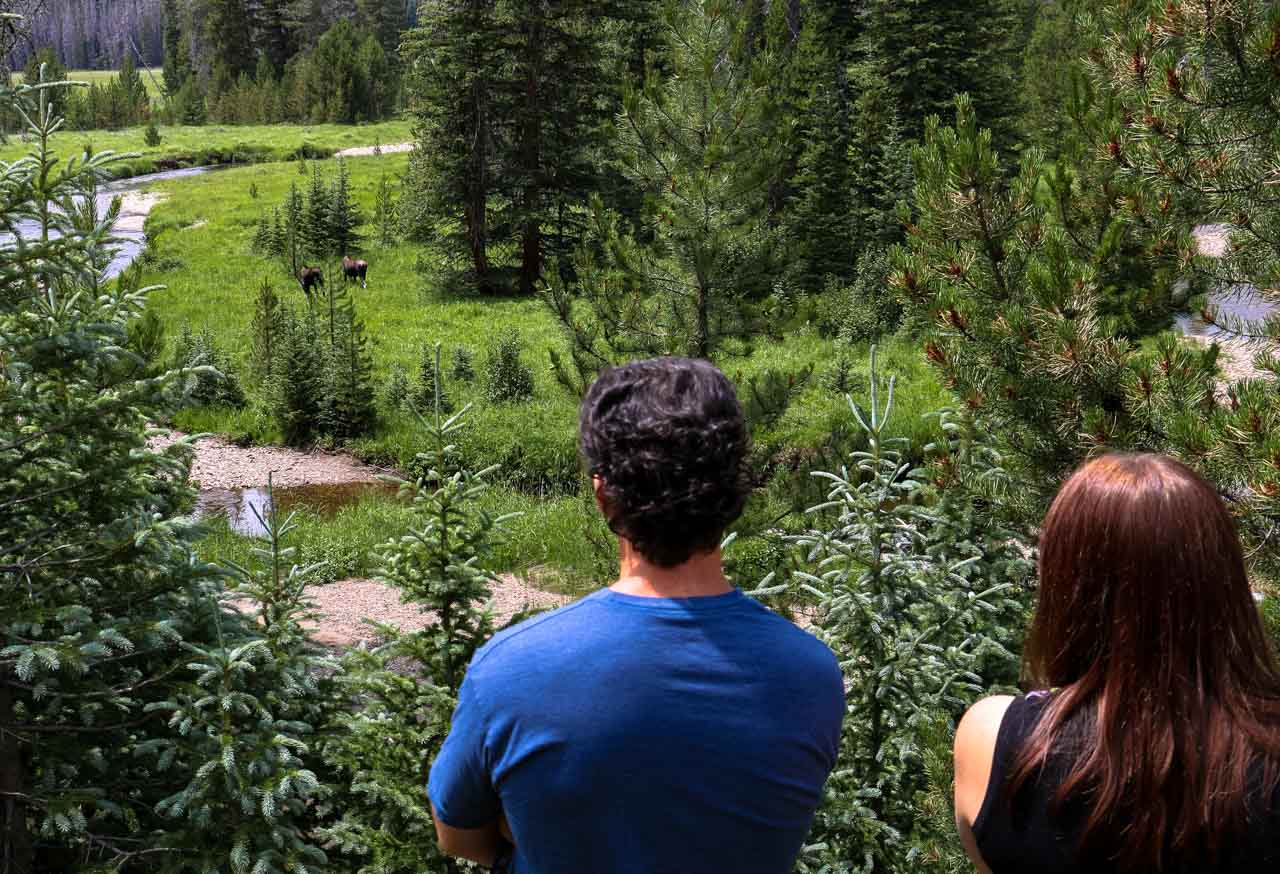
Moose Safety Tips
They may come across as calm and aloof, but don’t confuse that for gentleness. Moose are among the most dangerous animals in America’s national parks.
In fact, significantly more people are injured by moose than bears each year. Especially in spring (calving season) and fall (mating season), moose can be particularly dangerous.
So, in order to stay safe while hiking and recreating in moose country, it’s important that you know what to do when encountering a moose.
You can read more about moose safety here.

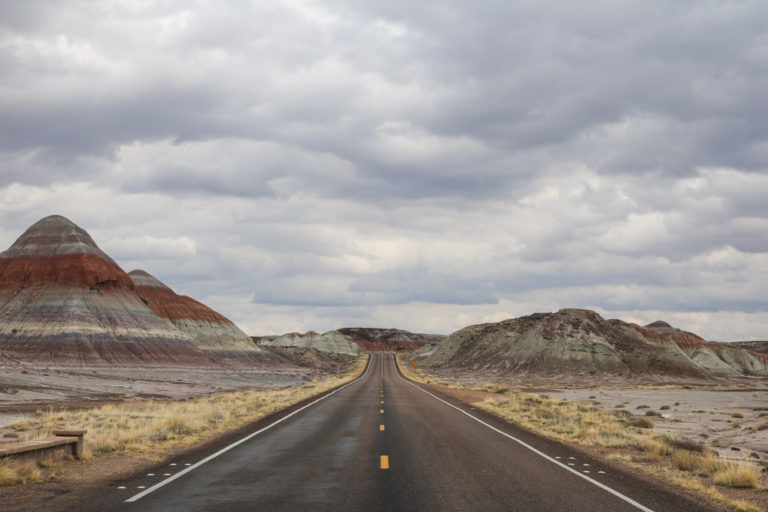





Seen them in Kawunechee area of rmnp while fly fishing
I’m not a fly fisherman myself, but I can imagine it’s a great way to see lots of different wildlife, including moose of course!